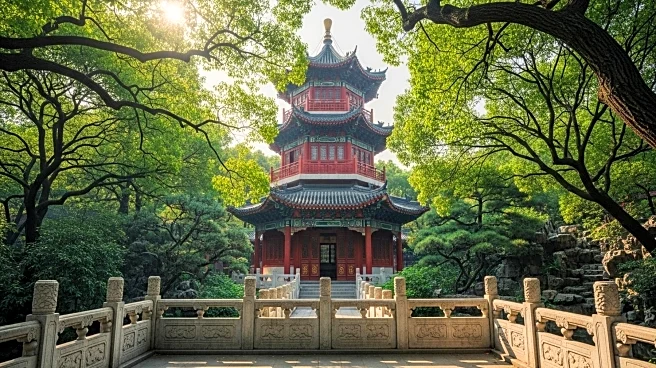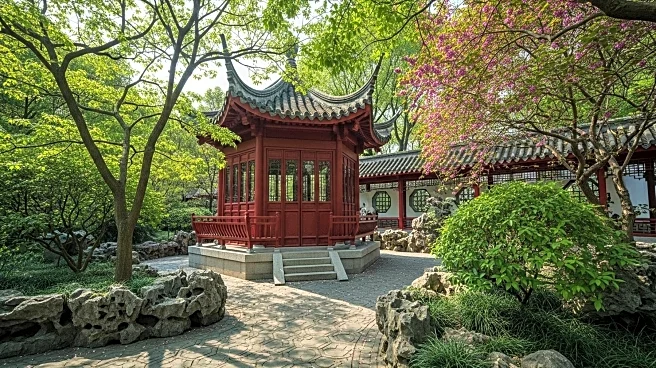What's Happening?
The Qianlong Garden in Beijing's Palace Museum has reopened after a 25-year conservation project led by the World Monuments Fund (WMF). The $20 million restoration effort focused on preserving the garden's original materials and design while ensuring long-term sustainability. The garden, built between 1771 and 1776, features 27 buildings across four courtyards, showcasing 18th-century Chinese imperial design with European influences. The project began with the restoration of the Juanqinzhai pavilion, completed in 2008, and continued with other structures like Fuwangge, Zhuxiangguan, and Yucuixuan. The initiative also included an exhibition exploring the garden's history and restoration process.
Why It's Important?
The reopening of the Qianlong Garden marks a significant achievement in cultural preservation, highlighting the importance of international collaboration in conserving historical sites. The project not only preserves a vital piece of Chinese heritage but also serves as a model for future conservation efforts worldwide. The initiative has trained over 75 professional conservators, combining modern conservation science with traditional craftsmanship, thus addressing a gap in professional conservation training in China. This effort enhances cultural understanding and appreciation, fostering global heritage stewardship.
What's Next?
The World Monuments Fund plans to continue its partnership with the Palace Museum for future projects and programs. The success of the Qianlong Garden restoration may lead to similar initiatives within the Forbidden City, further preserving its historical significance. The ongoing collaboration aims to expand conservation training and resources, potentially influencing preservation practices across China and beyond.
Beyond the Headlines
The conservation of the Qianlong Garden underscores the ethical responsibility of preserving cultural heritage for future generations. It highlights the challenges of maintaining historical authenticity while integrating modern techniques. The project also reflects the cultural exchange between China and Europe during the Qing dynasty, offering insights into historical global interactions.












